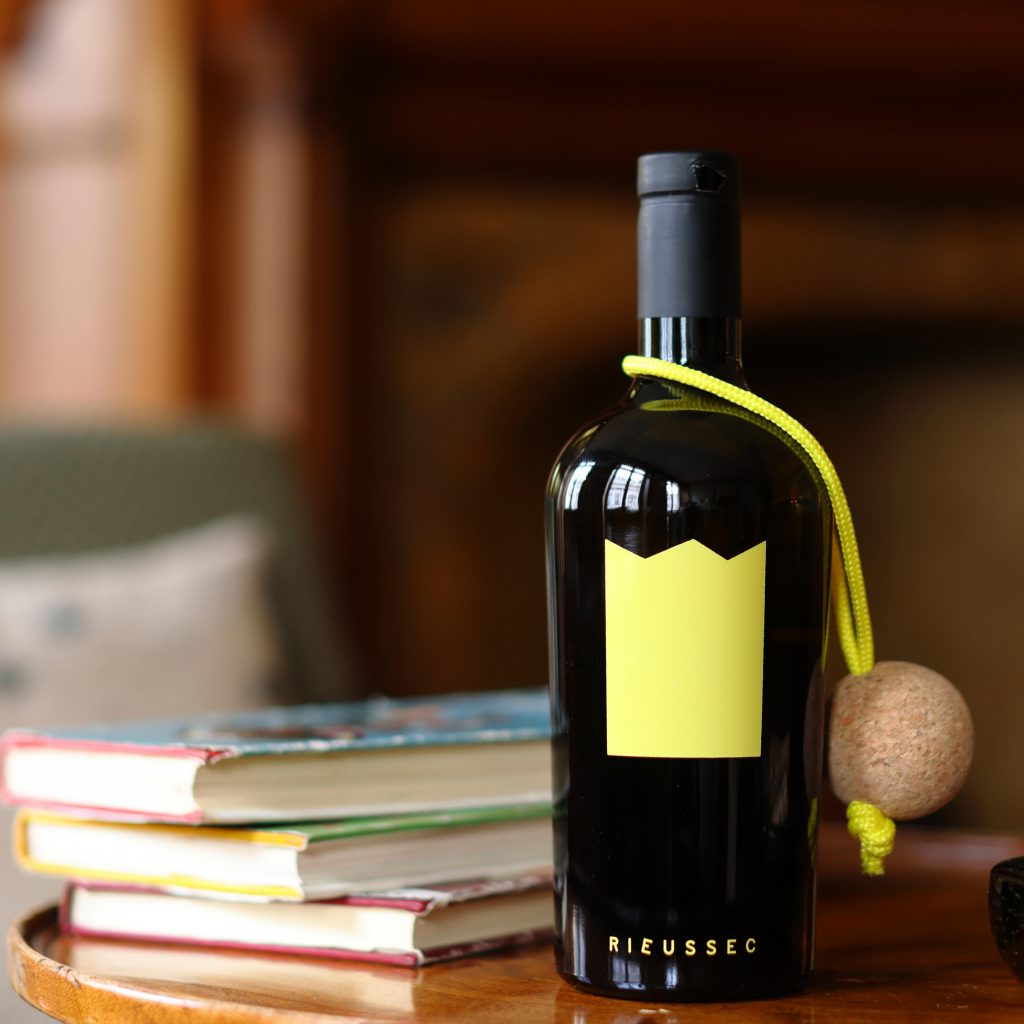Château Rieussec: it all starts with a bottle
Author: Hannah Crosbie

For the 2019 vintage, Château Rieussec is breaking centuries of convention with innovation: a striking new bottle with sustainability at its core. We caught up with the estate’s Jean-Sébastien Philippe to learn how this is an important step towards a sustainable future for Sauternes.
When we think of innovation in the world of wine, France’s established fine wine institutions don’t usually jump to the front of our minds. But a quiet change is happening behind the walls of one of Sauternes’ most renowned houses: Château Rieussec, part of the famed Domaines Barons de Rothschild group.
Here, revolution has arrived in the shape of a redesigned bottle. New for the 2019 vintage, its opaque glass, striking crown emblem and spherical cork stopper looks more like an artisan spirit than a world-class wine.
So what was the reason for taking such a drastically different visual approach? International Director Jean-Sébastien Philippe makes it clear that wine has been long overdue a customer-centric refresh.
“We need to follow what other industries have been doing very cleverly, particularly the gin, Cognac and Port industries,” he explains. “Within just a few years, they’ve completely reinvented themselves without touching the actual product.”
Rieussec took notes from these other sectors in the drinks world and enlisted the help of Big Game – a Swiss agency known for their work with IKEA and Muji. The new concept traded in old-school French cursive for striking modern design.
A SUSTAINABLE FIRST STEP
But the new bottle is more than just a fresh lick of paint: it’s a big first stage into a more sustainable future for Château Rieussec – and Jean-Sébastien hopes to lead by example.
“Sustainability and social impact are something we’re very much involved in,” he says, referring to the group at large. “We’ve started to move all of our vineyards into organic agriculture: Lafite Rothschild, Duhart-Milon and Rieussec are all in the process of achieving organic certification. We’re also developing agroforestry, agroecology and biodynamic practices across our châteaux. To call yourself consistently sustainable, you need to have a global approach.”
When it comes to the ‘19 bottle, the same holistic approach is taken, with a new aim to source all materials locally. Jean-Sébastien admits this time-consuming process has definite drawbacks.
“Honestly, it’s really quite difficult,” he admits, “If you’re looking to develop a gift box, for example, and you want something of high quality that’s cost-efficient – it can be hard to produce it in France entirely. Everything we create, if we can’t do it in here, we try to do it in Europe. For instance, the recycled glass bottle is from Italy and the cork is from Portugal.”
What’s next for this new manufacturing process?
“The recycled glass is the first step,” Jean-Sébastien explains. “The next would be to find bottles that are a bit lighter. This will reduce the cost of transportation as well as having a limited impact on the environment.”
THE FUTURE OF SAUTERNES
Mentioning the environment addresses the elephant in the room. Quality Sauternes relies heavily on very specific climate conditions to develop the right amount of botrytis cinerea, the so-called “noble rot” required to produce the region’s famous sweet wine. Due to climate change, this is something that’s harder than ever to achieve.
“The big question for us will always be global warming and the extreme vintages due to these changes,” Jean-Sébastien admits. “One thing that we are all too aware of is that botrytis can be incredibly difficult to get. There is either too high a humidity with no sun, or sun with no humidity – we’re facing more and more barriers between us getting the kind of botrytis development we want.”
What possible solutions could there be to this? It’s clear the team at Rieussec is full of ideas.
“We’ve been thinking, perhaps we need to experiment further with grapes that are more reactive to the climate. Perhaps it’s Sauvignon Blanc, perhaps it’s Sémillon, perhaps it’s Muscadelle. Another thing we’re considering is our dry white wine: R du Rieussec.”
“Before, we used to have no real strategy behind it as all our demand was for botrytised wines,” he reveals. “But we’ve seen that while sweet wines are suffering, white dry wines are flourishing in Sauternes, with an increasing demand from customers. So we’re putting even more attention and precision into our winemaking – it’s a very exciting development.”
“IT ALL STARTS WITH A BOTTLE”
It’s apparent that there are plenty of plans to meet the challenges posed by global warming. But it’s not all bad news: I ask Jean-Sébastien what’s in store for the new-look Château Rieussec.
“Simply, we want the bottle to be in the most vibrant places around the world,” Jean-Sébastien explains with a laugh. “We want Rieussec to be what people open in those special moments, and I believe Sauternes is some of the most magical wine in the world.”
Magical as it is, how exactly do you go about changing the way we consume such a traditional wine?
“We discovered that we needed to disconnect from this “food occasion” associated with sweet wine. There are so many wines and spirits you think can only be drunk at certain points in a meal. Why always keep Sauternes for foie-gras or desserts? Why not enjoy Sauternes as an apéritif as well as an after-dinner drink? It’s about creating a desire to move away from traditional consumption into a new way of drinking Sauternes. And we knew it would all start with a bottle.”


